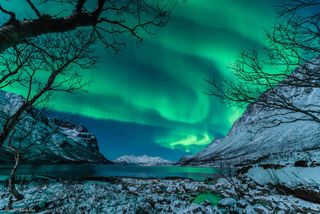You may have seen pictures of the aurora borealis (or aurora australis, depending on which pole it is located at), a series of colorful waves of light in the sky visible near the poles. It is definitely a beautiful sight to see, leaving everyone who watches it in awe, but how exactly does it occur?

As history has it, many different civilizations had their own ideas. According to Stefanie Waldek on Space.com, the Inuit believed that these lights are spirits using a walrus head to play ball. For the Vikings, they saw it as light reflecting off armor of valkyries. All in all, these are pretty interesting and creative ways to view this phenomenon. However, until the 20th century, none really got close to describing how it really happens. Kristian Birkeland, a scientist from Norway, started the conversation by theorizing that particles from the sun collide with Earth’s magnetic field, creating the iconic lights. It was not widespread at his time, but this theory eventually became cemented as true. Since the sun has such high temperatures, molecular collisions are very common, leading to these molecules being flung into space in a solar wind. The magnetic field is weaker at the poles, which allows some electrons and protons from the sun to pierce the atmosphere and collide with gas particles. This collision is what causes those colors to appear.

It is interesting to see that the different colors are also determined by the type of gas particles. The color displayed in the image above is formed by oxygen molecules at around 60 miles above the Earth, while a red variant requires oxygen at much higher altitudes. On the other hand, blue and purple versions are created with nitrogen.
Where Can the Aurora Borealis Be Viewed?
This question depends on a variety of factors, from the season to the sun’s activity level. For one, it can only be seen when the sky is dark, so winter is the best season for the occasion. Unfortunately, the skies also have to be clear, so a cloudy night may ruin the experience. And since it only happens at the poles, it means that you might also have to take a trip to somewhere like Canada or Norway in the North to have a chance to see it. The lights at the South Pole are a little more difficult to visit, unless you want to take a trip to Antarctica. Personally, I think it would be a little too chilly for me there, but anyways, if you’ve seen these lights before, consider me jealous!
Woah. The Northern Lights are so cool! Every time I see them in a movie, or a tv show, or any other piece of media, I am always in awe. It’s definitely on my bucket list to one day go see the lights and when I do, I hope it won’t be cloudy. I really like how you provided the scientific explanation behind the lights as well, I didn’t know that different colors required different kinds of gas particles, so that’s really interesting.